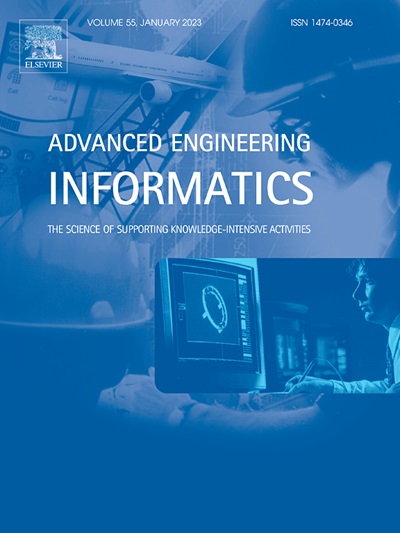基于稀疏传感器数据和启发式引导学习的超声速燃烧流场智能重构
IF 8
1区 工程技术
Q1 COMPUTER SCIENCE, ARTIFICIAL INTELLIGENCE
引用次数: 0
摘要
利用稀疏传感器数据重建超声速燃烧条件下的全局燃烧流态是一项新的重大挑战。这一挑战对于推进在复杂和极端环境下运行的超音速车辆的测量和诊断技术至关重要。然而,当传感器数量很少时,这项任务变得非常棘手。当前的端到端学习模型在重建整个空间域的燃烧流时经常面临显著的泛化问题,特别是在地面风洞试验中通常使用的稀疏压力测量系统的背景下。为此,本研究引入了一种包含启发式引导学习的燃烧流智能重建模型,利用稀疏压力传感器测量实现了整个空间域的精确流场重建。所提出的模型分为两个不同的阶段。第一阶段为启发式学习阶段,基于稀疏的压力测量数据,采用多梯度学习策略学习整个空间域内流场不同尺度的联合特征分布。在第二阶段,即引导学习阶段,采用多尺度特征融合机制,对联合特征分布中粗细分布特征的内容和结构细节进行细化。利用在不同马赫数下收集的地面测试数据集验证了所提出模型的有效性。实验结果表明,该模型在各种复杂和极端场景下都具有优异的性能。本文章由计算机程序翻译,如有差异,请以英文原文为准。
Intelligent reconstruction of supersonic combustion flow fields using sparse sensor data and heuristic-guided learning
Reconstructing the global combustion flow state under supersonic combustion conditions using sparse sensor data presents a novel and significant challenge. This challenge is critical for advancing measurement and diagnostic technologies in supersonic vehicles operating in complex and extreme environments. However, the task becomes notably tricky when the number of sensors is minimal. Current end-to-end learning models often face significant generalization issues when reconstructing combustion flow across the entire spatial domain, especially in the context of sparse pressure measurement systems typically used in ground wind tunnel tests. To this end, this study introduces an intelligent reconstruction model for combustion flow that incorporates heuristic-guided learning, enabling accurate flow field reconstruction across the entire spatial domain using sparse pressure sensor measurements. The proposed model operates in two distinct stages. The first phase is a heuristic learning phase, which uses the multi-gradient learning strategy to learn the joint feature distribution of different scales of the flow field in the whole spatial domain based on the sparse pressure measurement data. In the second stage, the guided learning stage, a multi-scale feature fusion mechanism is applied to refine both the content and structural details of the coarse and fine distribution features within the joint feature distribution. The efficacy of the proposed model is validated using a ground test dataset collected at various Mach numbers. Experimental results demonstrate that the model achieves superior performance across various complex and extreme scenarios.
求助全文
通过发布文献求助,成功后即可免费获取论文全文。
去求助
来源期刊

Advanced Engineering Informatics
工程技术-工程:综合
CiteScore
12.40
自引率
18.20%
发文量
292
审稿时长
45 days
期刊介绍:
Advanced Engineering Informatics is an international Journal that solicits research papers with an emphasis on 'knowledge' and 'engineering applications'. The Journal seeks original papers that report progress in applying methods of engineering informatics. These papers should have engineering relevance and help provide a scientific base for more reliable, spontaneous, and creative engineering decision-making. Additionally, papers should demonstrate the science of supporting knowledge-intensive engineering tasks and validate the generality, power, and scalability of new methods through rigorous evaluation, preferably both qualitatively and quantitatively. Abstracting and indexing for Advanced Engineering Informatics include Science Citation Index Expanded, Scopus and INSPEC.
 求助内容:
求助内容: 应助结果提醒方式:
应助结果提醒方式:


